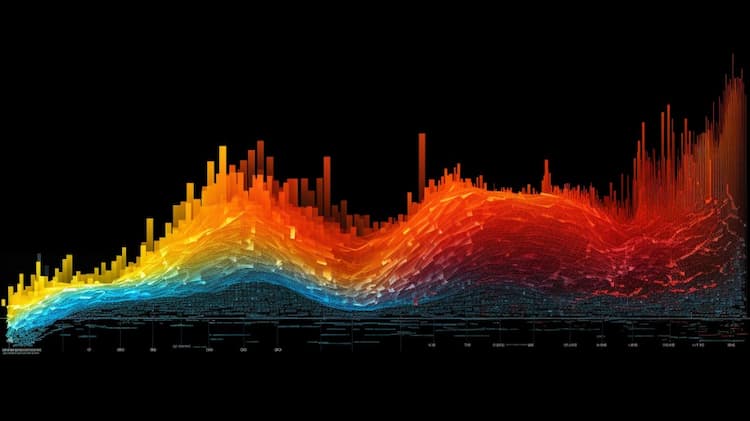GSFP ISSUER
The Goldman Sachs Fund (GSFP) is an actively managed exchange-traded fund (ETF) that, under normal circumstances, invests at least 80% of its net assets in equity investments in both U.S. and non-U.S. companies. These companies are believed by Goldman Sachs Asset Management, L.P. (GSAM), the Investment Adviser, to be associated with addressing environmental issues. The fund focuses on various forms of equity investments, including common stock, preferred stock, warrants, and other instruments providing exposure to environmentally conscious companies. GSFP targets investments aligned with key themes such as clean energy, resource efficiency, sustainable consumption, the circular economy, and water sustainability. Notably, the Key Themes and areas of investment may change over time at the discretion of the Investment Adviser. The fund is non-diversified under the Investment Company Act of 1940, allowing it to invest a larger percentage of its assets in fewer issuers than diversified funds. Furthermore, GSFP may have significant exposure to specific sectors, including industrials, materials, and technology, and may invest in foreign securities, including those from emerging markets. As an actively managed ETF, GSFP does not seek to replicate the performance of a specific index, employing a fundamental investment process that integrates environmental, social, and governance (ESG) factors alongside traditional considerations in the stock selection process.
GSFP DIVIDEND
The Goldman Sachs Fund (GSFP) provides potential dividend income to its investors as part of its investment strategy. The fund aims to deliver returns through its investments in equity securities of companies associated with addressing environmental challenges. As an actively managed exchange-traded fund (ETF), GSFP has the flexibility to select investments aligned with key themes, such as clean energy, resource efficiency, sustainable consumption, the circular economy, and water sustainability. While the fund does not specifically highlight a dividend focus, the potential for dividend income may arise from the equity investments in companies contributing to environmental solutions. Investors seeking a balance of environmental impact and potential income may find GSFP's dividend prospects appealing within the context of its broader investment objectives. However, it's important for investors to review the fund's specific dividend policies and historical performance for a more detailed understanding of its income-generating potential.
GSFP TRACKING
The Goldman Sachs Fund (GSFP) is actively managed and does not operate as an index fund, meaning it does not seek to replicate the performance of a specific index. As such, GSFP employs an active investment strategy under the guidance of Goldman Sachs Asset Management, L.P. (GSAM). Unlike passively managed funds that aim to mirror a benchmark, GSFP's investment decisions are based on a fundamental investment process that integrates environmental, social, and governance (ESG) factors alongside traditional considerations. This active approach allows GSFP to dynamically select equity investments in U.S. and non-U.S. companies associated with addressing environmental challenges, as well as to adapt to changing market conditions and investment opportunities. Investors should note that GSFP's performance will be influenced by the decisions made by the fund's portfolio managers rather than tracking a predetermined index.
GSFP CORRELATION
The correlation of the Goldman Sachs Fund (GSFP) refers to its relationship with various market indices or asset classes. Given that GSFP is an actively managed exchange-traded fund (ETF) and does not seek to replicate the performance of a specific index, its correlation with traditional benchmarks may vary. The fund's performance is driven by the active investment decisions made by Goldman Sachs Asset Management, L.P. (GSAM), with a focus on environmental themes. The correlation of GSFP to broader market indices or specific sectors will depend on the fund's allocation and the performance of the underlying equity investments associated with addressing environmental challenges. Investors should be aware that GSFP's correlation dynamics can differ from passively managed funds that track specific benchmarks, as the fund's performance is shaped by the discretion exercised by its portfolio managers in selecting and managing investments aligned with its environmental focus.
GSFP SECTOR
The Goldman Sachs Fund (GSFP) exhibits exposure to various sectors as part of its investment strategy. The fund may have significant exposure to sectors such as industrials, materials, and technology, among others. The specific sector exposures of GSFP are subject to change over time, reflecting the dynamic nature of its actively managed portfolio. As an actively managed exchange-traded fund (ETF), GSFP allows portfolio managers at Goldman Sachs Asset Management, L.P. (GSAM) to make strategic decisions regarding sector allocation based on their assessment of investment opportunities aligned with the fund's environmental focus. Investors should be aware that the fund's sector exposures may evolve, and GSFP may have notable concentrations in specific sectors at different times. This sector-focused approach is integral to GSFP's broader goal of investing in companies associated with addressing environmental challenges, contributing to the fund's unique investment profile.
GSFP EXPOSURE
The Goldman Sachs Fund (GSFP) encompasses a diverse range of exposures as part of its investment strategy. GSFP primarily invests in equity securities of U.S. and non-U.S. companies associated with addressing environmental issues. The fund's exposure extends to various investment instruments, including common and preferred stock, warrants, American depositary receipts (ADRs), European depositary receipts (EDRs), and global depositary receipts (GDRs). Additionally, GSFP may invest in underlying funds, such as exchange-traded funds (ETFs), as well as engage in futures, forwards, options, and other instruments with similar economic exposures. The fund's exposure is not limited solely to companies directly involved in environmental solutions; it may also encompass broader sectors such as industrials, materials, and technology. GSFP's flexibility to invest in foreign securities, including those from emerging markets, further contributes to its diverse exposure profile. This approach allows GSFP, an actively managed exchange-traded fund (ETF), to adapt its exposures based on the evolving landscape of environmental challenges and investment opportunities. Investors considering GSFP should assess the fund's exposure dynamics and the potential impact on their overall investment objectives..



